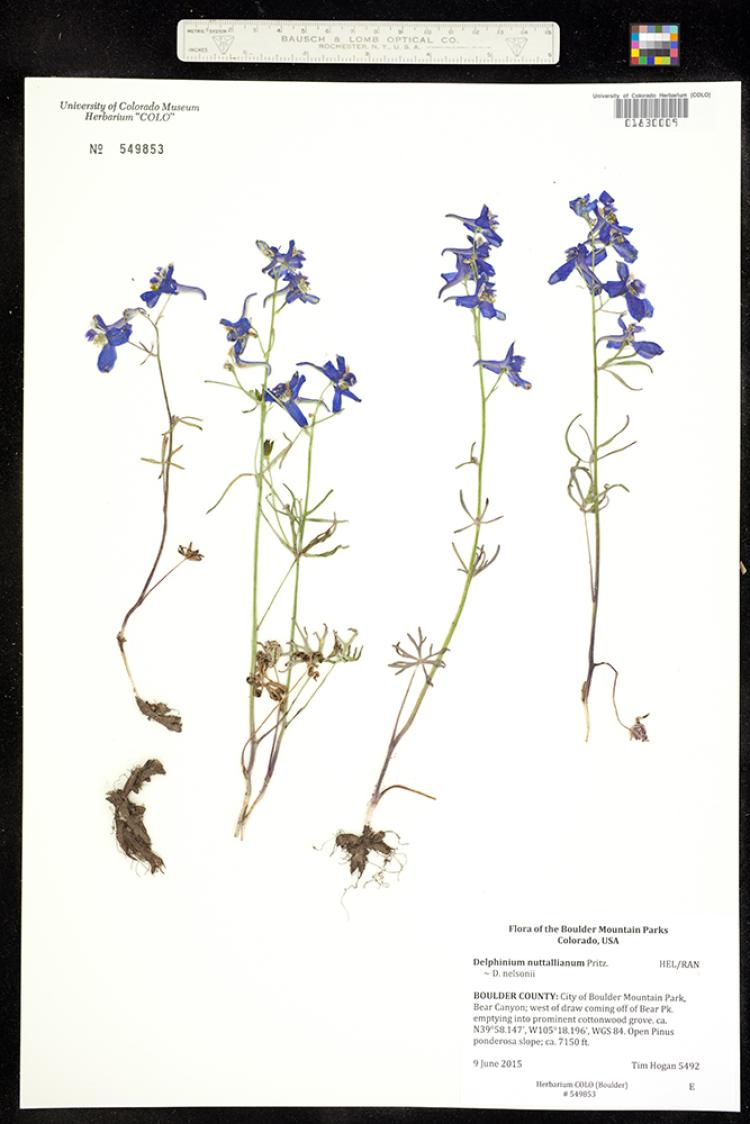The CU Museum is closed. We will be reopening soon.
During this time, collection visits will be available by appointment and other special access requests will be considered on a case-by-case basis.
Please email cumuseum@colorado.edu for more information.
Blue Larkspur

Thomas Nuttall (1786-1859), an English botanist and zoologist for whom the plant takes its species name, was an eccentric botanist. He would sometimes become so distracted by the plants of western North America that he would get lost when searching for specimens. We are cautious in discussing European naturalists who collected in the American West during the time of westward expansion, but there is evidence that Nuttall was also sympathetic to Indigenous tribes, and it has been recounted that he used his rifle to store seeds.1
The color of this larkspur is a real rarity in nature—less than 10% of all flowers are blue. One explanation is that it is difficult for plants to produce the color blue, making it a marker of plant-pollinator fitness (akin to the showy colors of male birds being a signal of good fitness).2
All larkspurs contain poisonous compounds that are hazardous to cattle. The same property has made larkspur an effective control of lice on humans and animals since medieval days.
1. https://www.harvardmagazine.com/2015/05/thomas-nuttall
2. https://www.permaculturenews.org/2021/01/28/the-mystery-of-the-blue-flower-natures-rare-colour-owes-its-existence-to-bee-vision/
Specimen Name: Delphinium nuttallianum Pritz
Location: City of Boulder Mountain Park, Bear Canyon. Open Pinus ponderosa slope; ca 7150 ft
Date: June 9, 2015
Collected by: Tim Hogan

